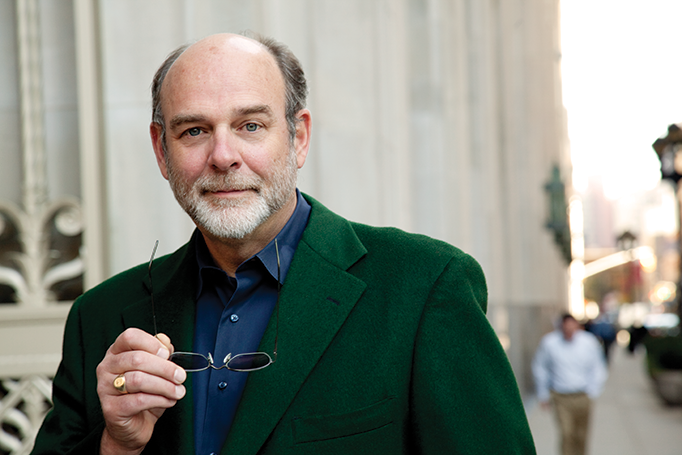
A mall or two here and there might be ailing and dying, but the mall surely is not. On the contrary, assert some observers, the modern shopping center and the brick-and-mortar store have a rich future still ahead. -Media -images of tumbleweed-strewn parking lots and boarded-up shopping centers notwithstanding, any prophecies that the end draweth nigh for the Western shopping center are a tad overwrought, according to retail consultant Paco Underhill. Certainly, some malls are going away, he concedes, but in his view this is no tragedy.
“Now, here in the mature markets, the U.S. and European markets, part of what we’re finding is that ‘A’ malls are doing well and there are a bunch of ‘C’ and ‘D’ malls which are failing,” said Underhill, an environmental psychologist and the founder of New York City–based Envirosell, a market research and consulting firm. “Some of those malls are going to be re-purposed in one way or another. But, ultimately, some of them just deserve to be knocked down. They were butt-ugly the day that they opened.”
For high-quality shopping center developers, however, Underhill sees a world of opportunity. “I think across the emerging markets, malls are a very -important part of modernization, because they provide three things: First is security — security that people may not find on the street,” he said. “The second thing that a mall can provide is a higher level of hygiene, meaning that it’s clean and that somebody cares for it and that the carefulness isn’t just location-by-location, it’s the entire place. Third, they provide climate control: It is a comfortable place. Whether it’s very hot outside or very cold outside or whether it’s very rainy, you can always go to a shopping mall, and it’s perfect.”
There are still more reasons for optimism about shopping centers as we go -forward, Underhill says. “Let’s recognize too that the reason why we go to the mall is often not just to acquire goods, it’s to be social,” he said. Such is even more the case in emerging markets, and this is discernible by sound, he notes. In a U.S. mall one may hear the squeak of sneakers, whereas in a mall in South America, Eastern Europe or the Middle East, one hears the clatter of high heels of young women who are going to the mall to be seen.
And any commercial threat from the online side will work only in markets where delivery is easy and reliable, Underhill says. “One of the promises in an emerging market that a mall offers is secure delivery,” he said. “If you think about commerce, it depends upon reliable delivery and trucking services as an alternative to people going to the store. And that reliable, inexpensive delivery process exists here in the U.S., it exists in parts of Europe, it does not exist in most of the rest of the world.”
But even in the developed world, e-commerce is highly unlikely ever to replace the physical shopping space to any considerable degree, says Underhill. “I think the relationship between the bricks-and-mortar world and the online world is still getting settled,” he said. For durable goods, “often the online is not able to deal with installation issues and delivery issues in the same way that a bricks-and-mortar merchant is, and that disconnect is basically making a lot of people very unhappy.”
Malls are changing, of course. “Almost no developer is talking about building malls now — they’re talking about building ‘alls,’ which is to make sure that a new shopping mall has residential and commercial spaces that are built into the plan so that a certain class of shoppers, if they wanted to, could shop in their bedroom slippers,” he said. These next-generation shopping centers will be more attractive, too; they will have much more natural light, he predicts, and not just in the concourses but also in the stores, where the merchandise can be shown off just the way it is to be used.
The job of a shopping center manager will undergo change as well, he says. “Historically, mall management has been passive,” he said. Shoppers traditionally have only interacted with mall personnel when something has gone “radically wrong.” By contrast, “the modern shopping mall is a much more curated space, where management is actually making an effort to be able to touch people’s experiences positively.” Shopping center managers will need to experiment more as they try to serve distinct segments better, whether an age demographic, an ethnic group or even a niche of dedicated hobbyists, he says.
And shopping enter developers will need to think about amenities that can build communities, Underhill says. “If you think about The Grove, in L.A., there’s that wonderful lawn on which all of the toddlers meet,” he said. “That’s a great incentive for mothers to drive past numerous other properties to get to that one, for the joy of watching their kids play.”
Nor will the pop-up phenomenon go away. Instead, smart developers will design more-flexible spaces, something practiced at General Shopping, a Brazilian shopping mall firm at which Underhill is a board member. “All of our parking lots are wired for power, meaning that we can throw up a Christmas fair or run a trade show in a parking lot,” Underhill said. “We are actively looking for ways in which we can use the concourses of our malls,” he said.
Such experiments can create lasting value. Underhill cites one General Shopping mall that turned a motorcycle parking lot into a showplace with power to draw not just devotees of the machines, but even motorcycle icon Harley-
Davidson, which requested space there for a dealership. That sort of creativity, says Underhill, is sure to keep shopping centers thriving long into the future.


